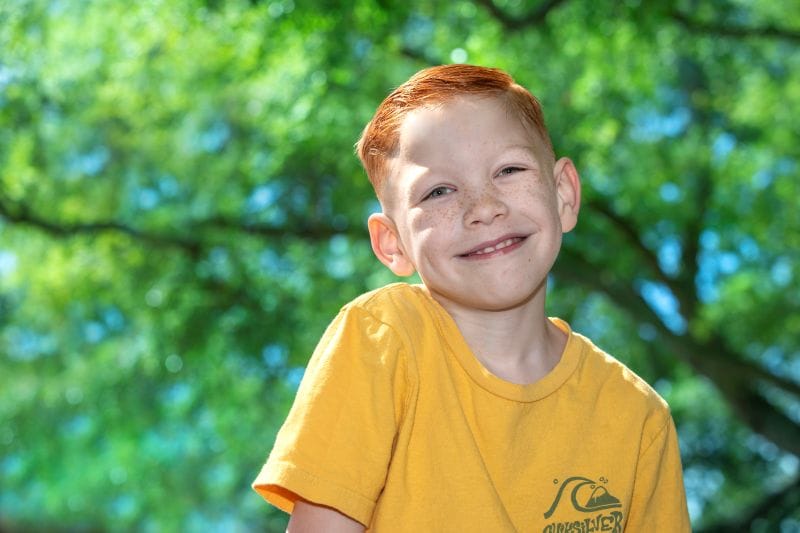Julian’s Journey with Congenital Diaphragmatic Hernia
Johns Hopkins All Children’s Hospital recognizes Congenital Diaphragmatic Hernia (CDH) Awareness Month with Julian’s inspiring story.
How to best describe young Julian?
Julian, with the sun-kissed hair and the sprinkling of freckles across his nose, the high-energy Florida boy who keeps pace with his siblings at a theme park or anywhere.
“He’s the sweetest boy, the most snuggly of all my kids,” says his mom, Morgan.
If Julian’s parents see him as a special gift, it’s partly because his origin story is so extraordinary.
“He really is like a miracle,” says his dad, Dave.
In early 2016, when Morgan was five months pregnant, she and Dave received crushing news.
A fetal scan showed their unborn child had severe congenital diaphragmatic hernia (CDH), a birth defect in which the diaphragm, the muscle that separates the abdomen from the chest, doesn’t develop completely and leaves a hole where abdominal organs migrate up into the chest.
Their baby had almost no left lung, and his heart had been pushed up against his chest wall.
“I wasn’t given any level of hope for my baby’s survival,” Morgan says.
But the couple refused to lose hope. From the family’s California home, Morgan scoured the country for programs that specialize in CDH.
She soon learned about David Kays, M.D., a pediatric surgeon with decades of experience in treating CDH patients who leads what is now the Center for Congenital Diaphragmatic Hernia at Johns Hopkins All Children’s Hospital in St. Petersburg, Florida.
Impressed with the team’s knowledge and the Center’s exceptional outcomes (survival rates of greater than 90%, exceeding national benchmarks) the couple decided to have their baby under Kays’ care.
“We believe in these kids,” Kays says, “even those on the highest end of the severity spectrum. Because of the care we’re able to provide, they truly can have great outcomes and quality of life.”
On a leap of faith, the family moved to Florida.
A video documents Julian’s birth, critically ill — too sick to utter a first cry.
Kays repaired his diaphragmatic hernia, moving the organs into place and patching the hole.
He was placed on extracorporeal membrane oxygenation (ECMO), a machine that provides heart and lung function.
Now it was time for healing.
Much of how a child with CDH does long-term depends on the quality of care in their first hours, weeks and months.
Beyond the surgical repair, the CDH team works to protect the lungs and the brain.
Julian was able to leave the hospital after two months, and, year after year, he has made amazing progress.
Today, he’s on no medications, and his lungs have adapted beautifully.
Julian is growing, active and has no physical limitations or learning delays.
A future as bright as the Florida sun.
Learn more about the Center for Diaphragmatic Hernia at HopkinsAllChildrens.org.
READ MORE:
- Pediatric Heart Surgery at Johns Hopkins: A Story of Hope
- Levi's Story with Complex Medical Needs
- Johns Hopkins All Children’s Hospital Wesley Chapel Plans!
*Presented by Johns Hopkins All Children's Hospital | Originally published in the April 2025 issue of Tampa Bay Parenting Magazine.


